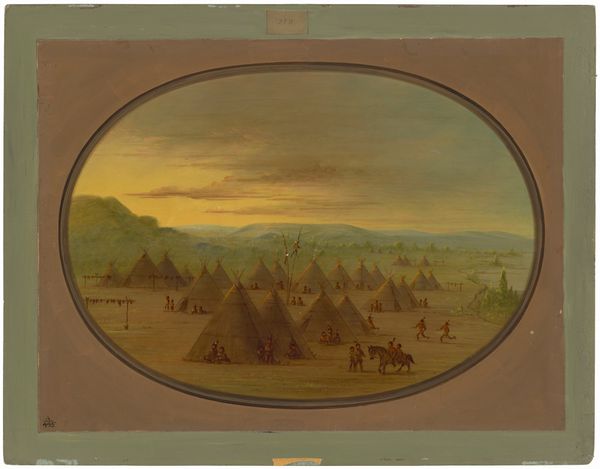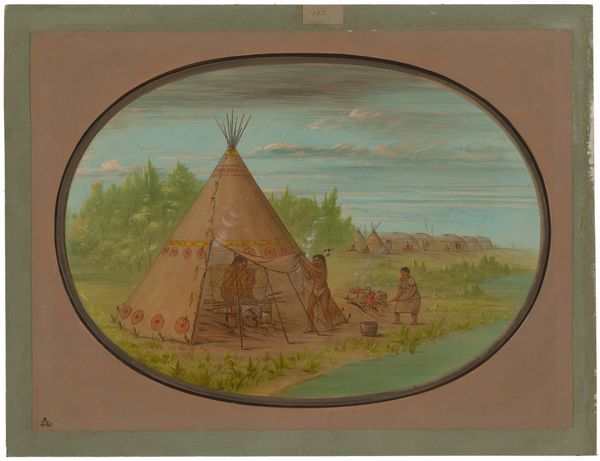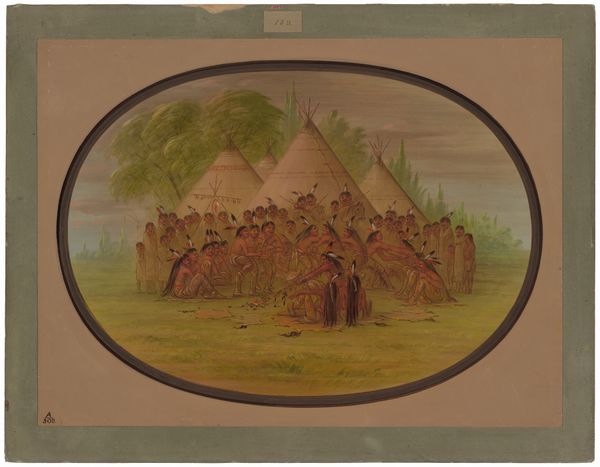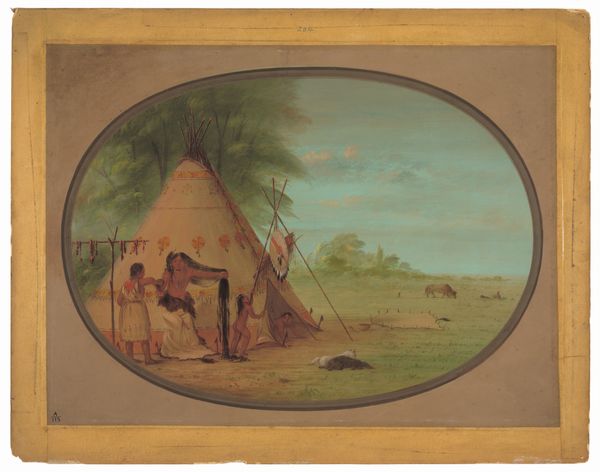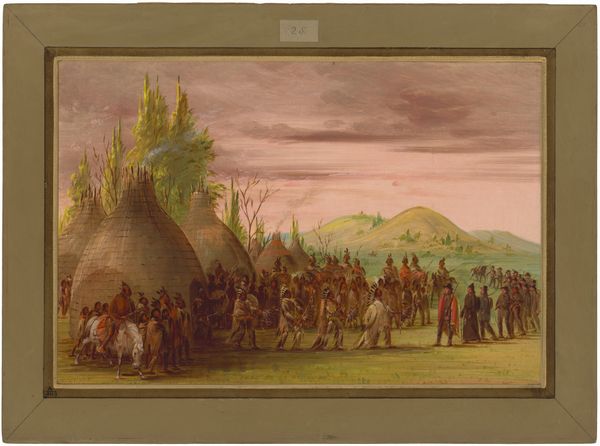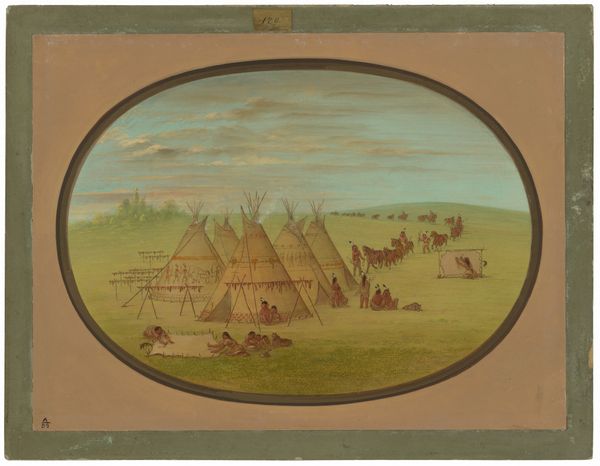
painting
#
narrative-art
#
painting
#
landscape
#
oil painting
Dimensions: overall: 47.5 x 63.9 cm (18 11/16 x 25 3/16 in.)
Copyright: National Gallery of Art: CC0 1.0
Editor: This painting, "An Ojibbeway Village of Skin Tents," made sometime between 1861 and 1869 by George Catlin, shows a settlement nestled into a hillside. The shapes of the tipis against that landscape really struck me. What do you see in this piece, especially considering it’s made with oil on canvas? Curator: The choice of oil paint is key. Oil allows for the meticulous depiction of the tents - the material, construction, and the narrative scenes painted on the hides themselves. Consider the labor involved: tanning, sewing, painting. This isn’t just about representing a scene; it's about revealing a material culture, right down to the methods of production, even exploitation. Does Catlin accurately portray these processes, or does the medium impose its own Westernized lens? Editor: That's interesting, I hadn’t really considered how the medium impacts what's being depicted. How would that Western lens you mentioned affect the way he presents Indigenous labor in this image? Curator: By rendering the scene in oil, traditionally a medium for "high art," Catlin arguably elevates the *subject matter* while simultaneously potentially obscuring the true grit and hardship behind the making and maintaining of the village. He presents it for consumption, you see? Think about what’s emphasized and what’s elided – are we really seeing the work? Editor: So, we're not just looking at an image, but also the choices behind its creation and the implications for representing labor. Thanks, I’m thinking about that now. Curator: Precisely. Materiality and production methods open a window onto deeper social and political issues at play. Hopefully you'll examine them in your practice moving forward.
Comments
No comments
Be the first to comment and join the conversation on the ultimate creative platform.

